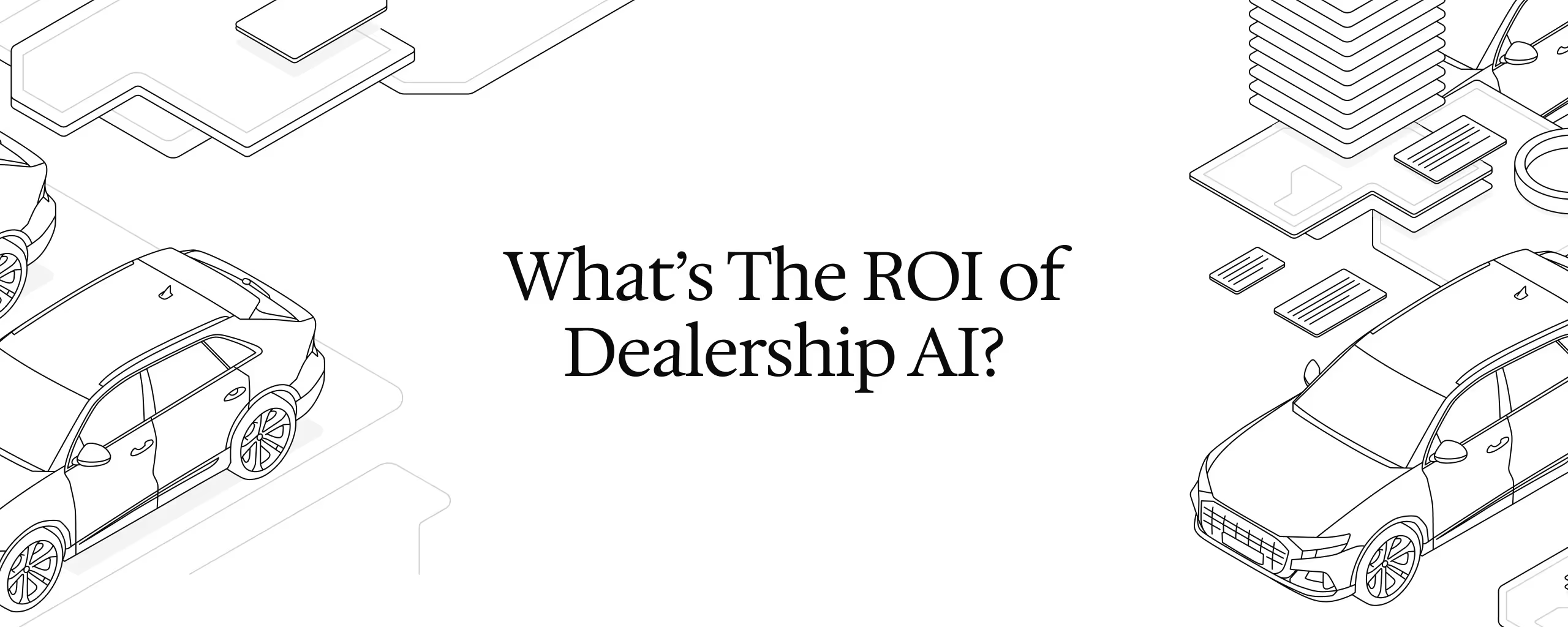AI makes big promises such as saved time, increased revenue, and 24/7 coverage, but in the dealership world, store leadership isn’t buying the hype. In this article, when we say dealership AI, we’re talking about voice AI for service departments that answers and manages every inbound call, books appointments, and frees your team for higher-value work.
Before you bring any AI tool into your dealership, you must answer for your decision-makers:
Will the AI adoption pay off?
In this article, we reveal how to evaluate the real-world value and how Toma’s free ROI calculator can show you exactly what voice AI could mean for your store, whether you’re running a single rooftop or a large group.
Defining ROI for Dealership Voice AI
When it comes to measuring the ROI on dealership automation and AI, most leaders focus on a few core categories:
- Revenue Impact: How many more appointments are booked? How many missed calls are recovered?
- Cost Savings: Is it reducing staff overtime, eliminating the need for extra headcount, or freeing up your BDC team for proactive work?
- CSI and Retention: Is the AI improving CSI scores and retention rates when ensuring inbound phone calls from new and returning customers are never missed?
- Efficiency Metrics: What’s your call coverage rate, transfer rate, and total hours saved?
It’s not just about cutting costs. The best AI for dealerships generates additional revenue, makes your team more efficient, and protects your customer experience at all costs.
Where Dealership Voice AI Can (and Can’t) Add Value
Not every AI tool is a perfect fit for every dealership’s problems. To get measurable results, map AI capabilities against your bottlenecks such as:
- Inbound Call Overflow: AI can answer 100% of calls, preventing missed revenue when phones get slammed.
- After-Hours Responsiveness: Capture service appointments even when the store’s closed.
- Basic Requests: Appointment rescheduling, recall checks, basic FAQs, AI can handle these instantly and save your team valuable time.
AI isn’t a magic fix for every inbound call though:
- Upset Callers or Sensitive Issues: Situations involving dissatisfaction, billing disputes, or safety concerns need a human touch.
- Previous In-Person Context: If last-visit advice wasn’t logged in the DMS, AI won’t know and should route the call to the original advisor.
When deployed strategically and focused on the calls AI can fully handle while routing the rest to the right humans — the results speak for themselves:
- At Middletown Honda, AI handles over 50% of inbound calls end-to-end, eliminating the need for additional phone coverage staff and saving the dealership over $100,000 annually.
- At Martin Management Group, AI doubled operational margins across 13 rooftops by automating 22,000+ calls in 90 days and scheduling over $2M in service appointments.
FAQ: How to Measure ROI from Dealership Voice AI
What’s the best way to measure AI ROI for my dealership?
Track metrics like missed call recovery rate, number of appointments booked, appointment conversion rate, and labor hours saved. Compare at least 3 months of call handling data before and after AI deployment to see changes in total calls answered, percentage handled without staff, and service revenue generated from booked appointments.
How do I know if AI is earning more than it costs?
Add your extra gross profit from service appointments to your labor cost savings, then subtract the AI’s cost. For example, if your store saves $4,000/month in staffing hours and adds $18,000/month in gross profit from service work booked by AI, that’s $22,000 in gross gains. Subtract the AI’s monthly cost to get your true net ROI.
Which KPIs matter most for Dealership Voice AI products?
Track call coverage rate (percentage of inbound calls answered), missed call recovery rate, appointment conversion rate, AI resolution rate (percentage of calls handled end-to-end without staff), and total call minutes automated by AI.
Should I measure ROI across the whole dealership or just service?
Start with service, because this is where call volume and appointment revenue are easiest to track. Once you have those benchmarks, expand measurement to other departments like sales or parts to capture the full impact of voice AI across the dealership.
How long before I see measurable ROI from AI?
Most dealers using advanced voice AI products see measurable ROI within 1-2 weeks, especially in high-volume major metropolitan areas.
Can Toma help me calculate ROI before I buy?
Yes. Toma’s free ROI calculator works for both single rooftops and large groups. In under 2 minutes, you’ll get a projected estimate based on your store’s data.
Try Toma’s ROI Calculator for Dealership Voice AI
The ROI calculator is fast, simple, and utilizes your dealership’s data to provide an accurate outlook of your future with a voice AI product like Toma. To begin calculations, you will be asked for:
- Service Center Call Volume: Your average inbound calls per day and how long each call lasts (in minutes).
Labor Information: How many staff members cover the phones, and their average hourly wage. - Current Challenges: Estimated missed calls per day and your average Repair Order (RO) value.
- Appointment Schedule Conversion Rate: What percentage of calls typically generate a service appointment.
- AI Resolution Rate: The percentage of calls that AI can handle end-to-end without transferring to a human (Toma averages between 50-80%).
After you enter your dealership’s data, the calculator will show you your store’s or group’s future with Toma:
- Time Savings: Hours saved per day, per month, and per year
- Labor Cost Savings: Monthly and annual savings from reduced phone coverage load
- AI-Attributed Revenue: Monthly and annual revenue captured by AI
- Annual Total Revenue with Toma: Your all-in projected impact, combining cost savings and added revenue.
In just a few clicks, you’ll see exactly how Toma can impact your store’s bottom line in more ways than one.

